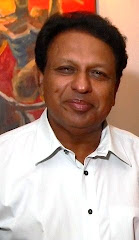Remarks
by former Ambassador T.P.Sreenivasan at the UN Academic Impact Seminar on
‘Disaster Preparedness and Management’ at the UN Headquarters in New York.
September 11, 2015.
Chairman
Ramu Damodaran,
Panelists
and
Participants,
I
am delighted to be back at the UN, particularly in Conference Room 6, where I
spent many days and nights, working on resolutions, which, we believed, would
change the fortunes of the world. Even the room has not changed, except for the
multitude of electronic gadgets and audio-visual equipment all around us. As
for myself, I have lost touch with the UN jargon and can speak only like an
outsider.
As
someone, who has moved from diplomacy to higher education, I am fascinated by
the work of UN Academic Impact under the leadership of Ramu Damodaran. I am honored
to be invited to participate in the seminar to share the experience of a
diplomat and an educationist. The more the academic community gets involved
with the UN, the better it will be for both.
I
have been fortunate enough not to be in the middle of a disaster, though I have
faced many official and personal crises. So I cannot claim any direct
experience of handling disaster management. But I have a friend in UNEP in
Geneva, who has handled so many disasters that he expects to name his autobiography
“My Life and Other Disasters.” I have gained some insights from his experience.
I shall also share some stray observations on the basis of my experience in the
UN.
The
UN was created to prevent war, the biggest man made disaster of all. Through
preventive diplomacy, peace making, peacekeeping and peace building, the UN has
contributed to make the world a peaceful place. The UN principles and
practices, such as preparedness, disaster relief and recovery are now being
applied to disaster management. In tackling disasters, the UN and its Agencies
draw heavily on the experience of the UN in the last 70 years.
While
the number and intensity of wars are less today, natural disasters seem to have
increased on account of terrorism, global warming, climate change,
desertification and other phenomena. Today, we have scientific evidence to show
that many such phenomena are consequences of human activity. There is hope,
therefore, that these can be prevented by more responsible human behavior.
Predictability
of natural resources has also increased because of research by some of the UN
Agencies such as the IAEA and the CTBT Organization. In their search for
evidence of nuclear tests, they have come across technology, which can point
towards possible earthquakes. People also predict disasters by observing
unusual developments around us. Even as we speak, some people in India are
saying that a major tsunami or earthquake is likely because it has been
observed that fish are jumping out of water to die on land!
Man
has lived with natural disasters for centuries and even accepted them as
nature’s way of maintaining a balance in human population. India takes pride in
the fact that it has made peace with nature and does not worry too much about aberrations
in nature. When Dr. Radhakrishnan, the philosopher President of India arrived
at the White House lawns by helicopter, the weather was very rough. President
Kennedy apologized that the US had not yet mastered the technology of changing
the weather. Dr. Radhakrishnan said that he did not have to worry as Indians
had mastered the technology of accepting the weather centuries ago.
Today,
international cooperation can prevent disasters by setting standards for
construction and maintenance, evacuation plans and environmental planning. The
UN has played a major role in disaster relief in every major disaster, whether
it is Nepal, Haiti or Fukushima. At the same time, in disaster management, the
affected country should take the lead and the work of the international
community should be supportive. Dispatching a huge number of relief personnel
is not always helpful.
The
UN should focus on promoting an ecosystem-based approach for reducing disaster
risks and climate change adaptation. Any development strategy, which does not
take into account disaster risks and environmental damage cannot be
sustainable.
Finally,
I would stress the need for educating the masses on disaster management. The
Kerala State Higher Education Council has been working with UNEP in Geneva in
developing a MOOC course, a revolutionary new concept in higher education, to
promote awareness of the new knowledge about ecosystems. The course has been
planned for both policy makers and experts. 12000 students from 183 countries
signed up for the course. The MOOCs model developed by UNEP should be
supplemented by the specialized knowledge of other Agencies such as the IAEA
and UNIDO. For instance, the investigation on the Fukushima disaster revealed
some strange facts. A Japanese Parliament study concluded that the Fukushima
disaster was a disaster that could have happened only in Japan. Apparently, the
disaster could have been avoided if the younger scientists questioned some of
the decisions taken by the management. But the Japanese hierarchy did not
permit such questioning. Another fact is that the Japanese society has changed
dramatically after the Fukushima disaster. Many young people have chosen to
focus on family and children, rather than live alone; having realized that life
is fragile and uncertain.
I
would suggest that the UN Academic Impact should embrace MOOCS as a matter of
faith to lower or eliminate borders to learning.
Thank
you.
